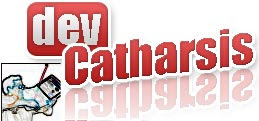Choosing your data tier is not always an objective choice. So I've decided to setup a data tier benchmarker. Here's how it works:
First I started choosing a simple entity: a Category.
Then I defined a simple data tier facade for it, as follows:
public interface IDataFacade
{
void Create(ISessionFacade sessionFacade, Category category);
Category Read(ISessionFacade sessionFacade, int key);
IList<Category> PagedRead(ISessionFacade sessionFacade, int page, int pageSize);
void Update(ISessionFacade sessionFacade, Category category);
void Delete(ISessionFacade sessionFacade, Category category);
}
As you certainly already noticed, I create another interface to façade the data tier session - ISessionFacade.
Then I created the integration test as follows:
Category newCategory = new Category();
newCategory.Description = "testing";
//
// C r u d
dataFacade.Create(sessionFacade, newCategory);
//
// c R u d
// Read
Category category = dataFacade.Read(sessionFacade, newCategory.Id);
Assert.AreEqual<string>(category.Description, newCategory.Description);
// PagedRead
IList<Category> categories = dataFacade.PagedRead(sessionFacade, 1500, 10);
Console.WriteLine("categories.Count: " + categories.Count);
//
// c r U d
category.Description = String.Format("{0}-{1}", category.Description,DateTime.Now.ToLongTimeString());
dataFacade.Update(sessionFacade, category);
sessionFacade.Flush();
//
// c r u D
dataFacade.Delete(sessionFacade, category);
sessionFacade.Flush();
The code above was executed on 8 threads, each iterating over 16 session openings, each callings 64 times.
Now for some fun: I implemented a NHibernate and a SqlClient version of this facades, for example:
public void Create(ISessionFacade sessionFacade, Category category)
{
((SessionImplementation)sessionFacade).Session.Save(category);
}
And the result was: NHibernate implementation was 15% faster! Isn't it great?
Ok, I must confess, the SqlClient code didn't use parameters, that's probatly why. Yet, an excelent result for NHibernate.
And yes, it's true, this doesn't prove NHibernation's scalability. But it's a start, and at least can be backed by real data.
One of these days I'll benchmark NetTiers and LINQ for SQL, and post the results back here. Cya there :)

